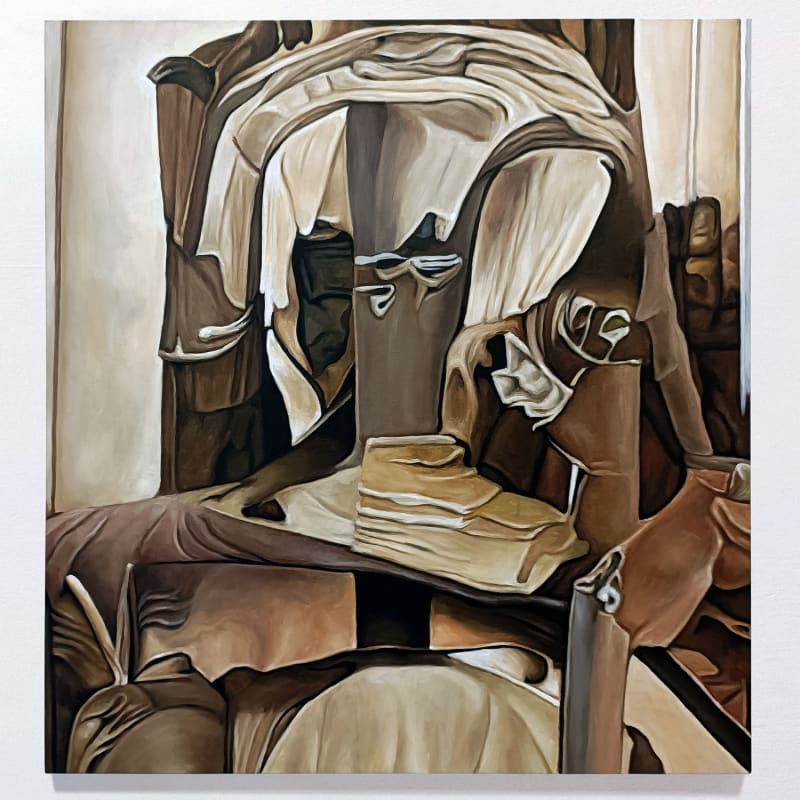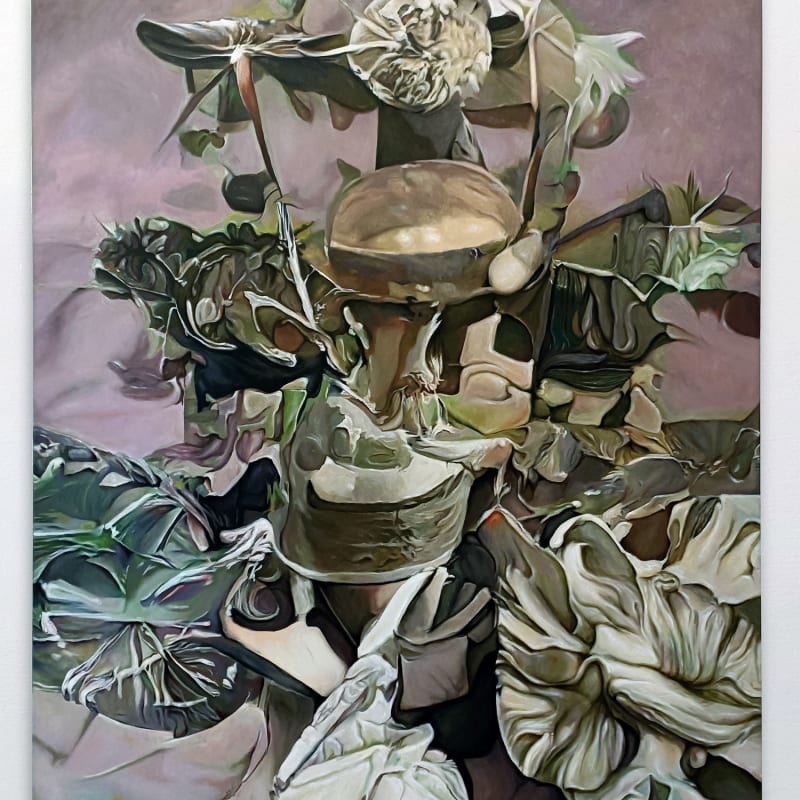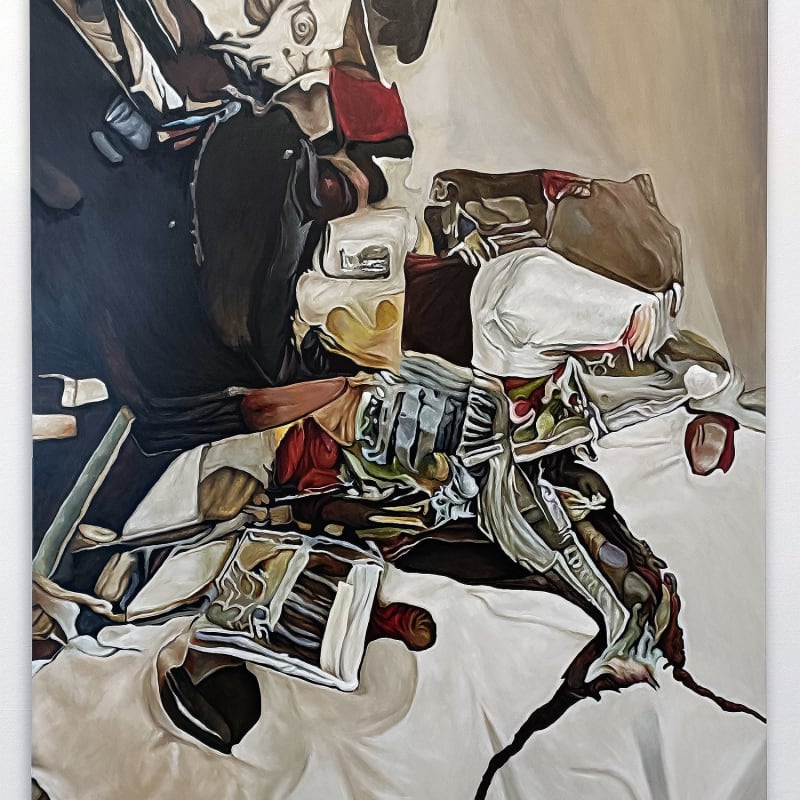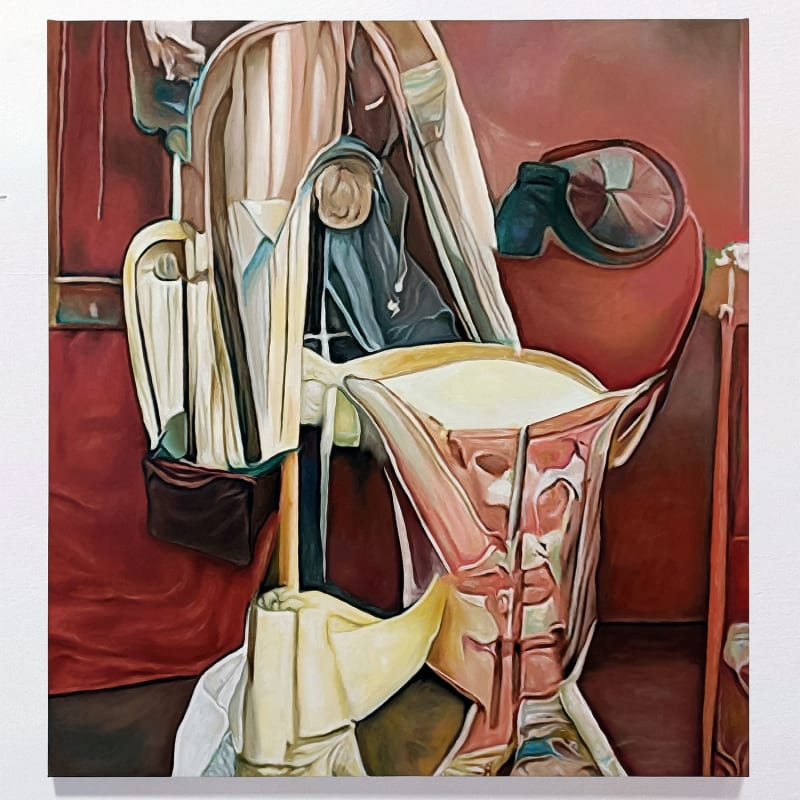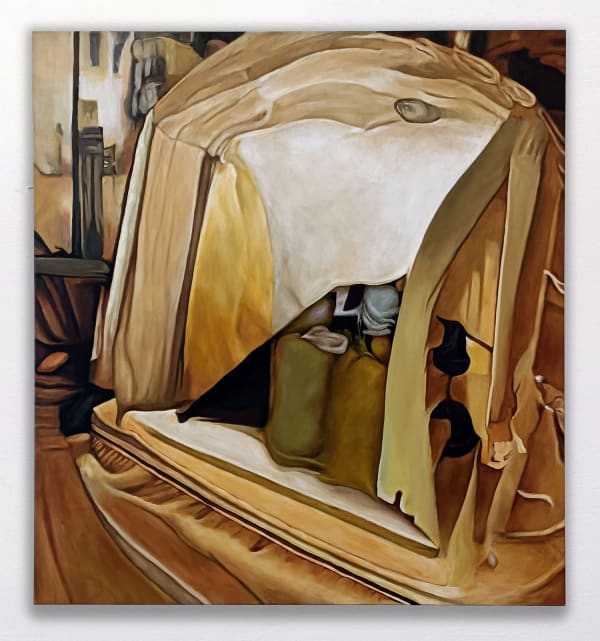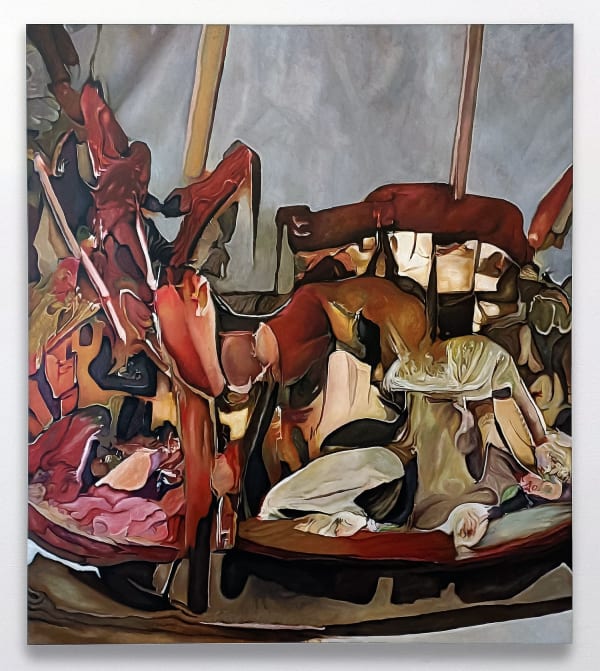Everything Except Itself: Emma Bjurström
A conversation between Emma Bjurström and Sofia Curman
Sofia: In earlier series you have used painting as a method to research your own family history as well as art history. You have created a space in the spotlight for what usually is unseen and under-valued, like the series where you studied backgrounds from historical paintings or the painting where you made an abstract composition of the parts of the façade of a typical Swedish homestead; Falu red planks, white trimmings and a blue door. In your new series, Everything Except Itself, you go deeper into abstraction on its own. Here you have no figurative starting points, only inner images and impulses. What was it like to work that way?
Emma: It has been liberating and created space for my work. To work thematically often makes me feel more limited that I need to be, but letting go of that makes me breathe easier when I paint. I needed that to move on.
S: Your works have a high density and movement and detail. So many threads go from your paintings into art history that it is hard not to search for a familiar motif. I feel that I am so close to understanding what is in front of me, but then the image is dissolved and another question appears. I think of your paintings as sensual manifestations of temporality, the fragmentary nature of memories and dreams. Does this make sense to you?
E: It’s just like that. While painting, I have read a book called Form and Objects by the French, contemporary philosopher Tristan Garcia. It has been rewarding to switch between reading and painting, because the reading has been so ephemeral. I read, I understand and again suddenly I don’t. The insights are so transitory. My paintings are like his text to me. Or like those images where the goal is to find hidden objects, to solve the puzzle of the image. But to my paintings there is no right answers, you can’t solve them.
S: You have titled the exhibition Everything Except Itself. What does the title mean to you?
E: Tristan Garcia writes that nothing can be anything in itself, everything is depending on who sees it. The meaning comes from the meeting. A pen means something to me and something else to a beetle. We limit everything to a sphere that means something to us, like when you see something familiar in my paintings. One of the paintings is titled No Matter What, that also comes from Tristan Garcia. We always answer questions, no matter if we want to or not.
Still, when I paint, my hope is to find some kind of liberation, to place myself outside of the things, to forget about them. It brings a disappointment for not being able to abstract objects from the relationships that we create. That I can’t create a shape that is free from representation.
S: It sounds painful. Still your way of painting is so manifesting- bold and full of joy.
E: To me, painting is foremost a visual struggle. It takes me months to create an image. I do a lot of sketching, now more in the computer. I paint slow, in many layers, and large. Sara Vide Ericson said in an interview that she wants to paint large scale, because then it feels like the painting owns you. It becomes a commitment. I want the image to absorb my being. I often feel the process is claustrophobic. At the same time, all the images and the challenge to paint them kicks me out of the painting all the time. The creation is hardly welcoming and embracing.
S: The creation of the images might not be, but the paintings are. They are mysterious and dramatic, and I want to be a part of the waving movement. I think a lot of the secretive and soft about your images is that they remind us of fabrics, that evoke a lot of associations to intimate things, like bed linen that someone has slept in, drapes hiding something, clothes on a body…
E: Yes, fabrics are to me the images connection to reality. Something to hold on to. In all times artists have painted fabric. Often in the background, but I give them the lead part, for instance, in Lacking Qualities, where the blue, fabric-like shape is so central that it almost attacks the viewer, at the same time blocking you from getting into the composition. It creates desire, the viewer becomes a voyeur.
S: After the long and hard struggle with the paintings, do you befriend them?
E: Yes, finally I do. When I see them together, I like them. I enjoy creating an exhibition and see how they talk to each other, and how they transform, depending on who is watching. That is when I almost understand what I have done.
/Sofia Curman and Emma Bjurström, 2023
Emma Bjurström was born 1986. She graduated from Gerrit Rietveld Academie 2014, and has since then used mainly painting as her medium. Previous exhibitions include two solo shows at Belenius and Lamb Gallery in London. Her works can be found in many private and public collections.
Photo: Ellinor Hall
-
 Emma Bjurström, Exit/Enter, 2023
Emma Bjurström, Exit/Enter, 2023 -
 Emma Bjurström, Exit /Enter II, 2023
Emma Bjurström, Exit /Enter II, 2023 -
 Emma Bjurström, Imprinted Vectors, 2023
Emma Bjurström, Imprinted Vectors, 2023 -
 Emma Bjurström, Lacking Qualities, 2023
Emma Bjurström, Lacking Qualities, 2023

